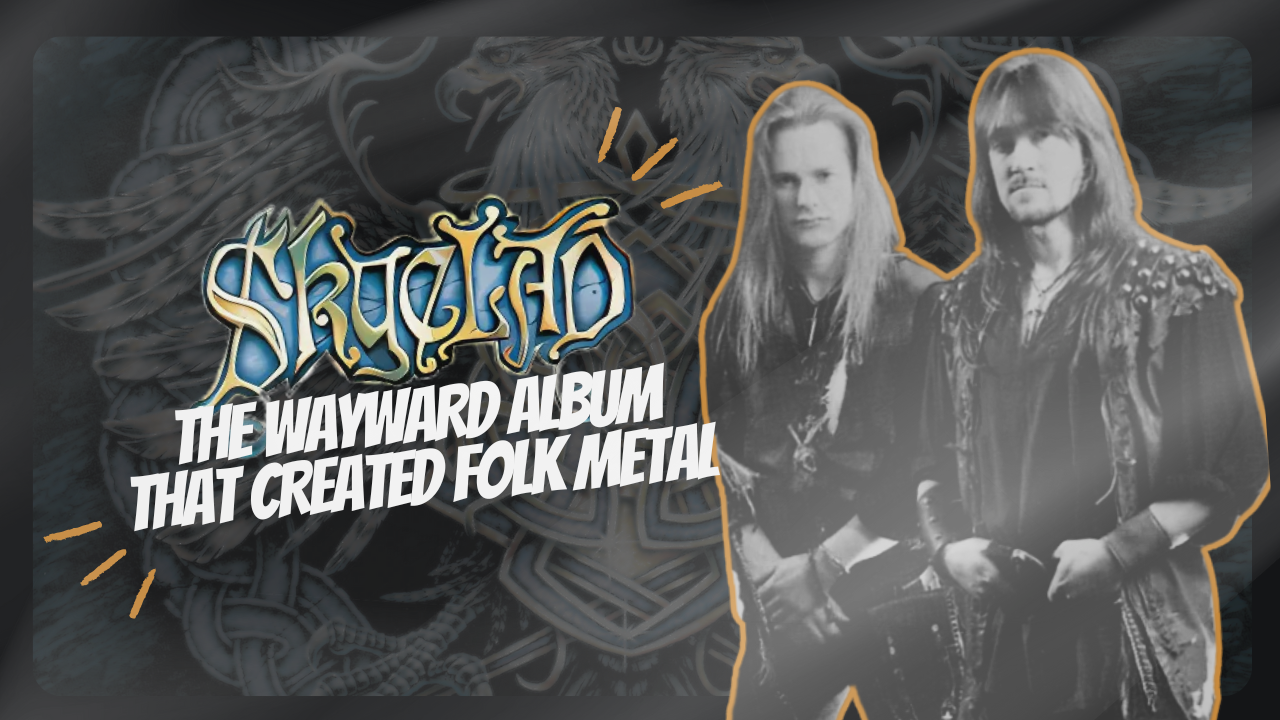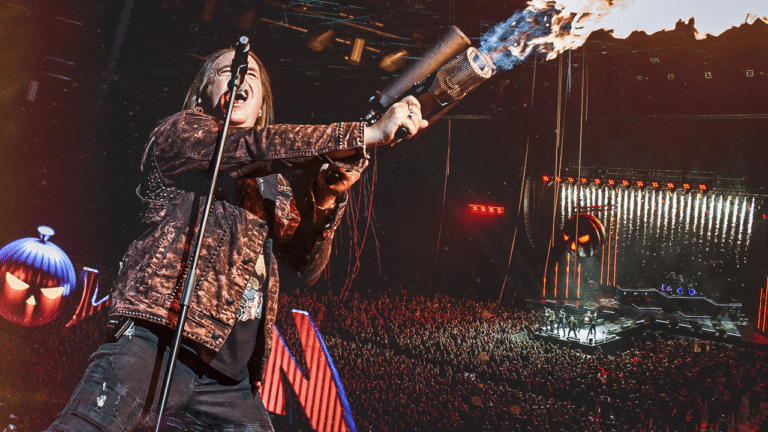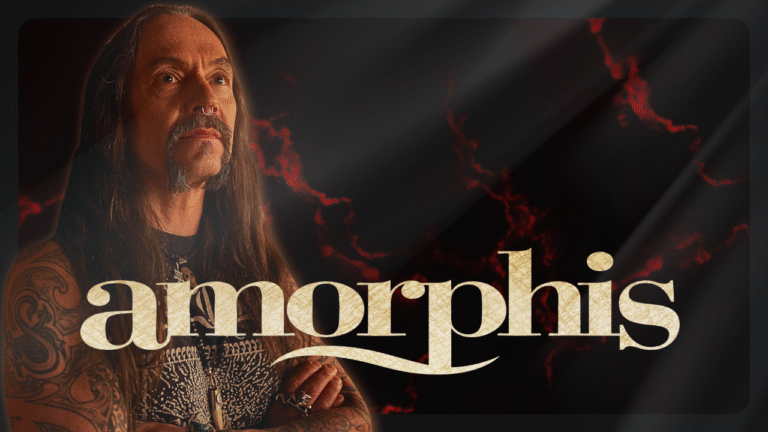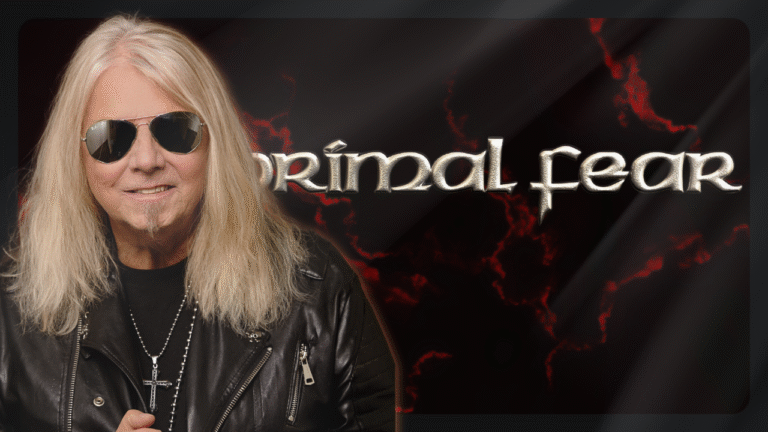Originally published in Nocturne Magazine
Before Eluveitie, Ensiferum, Turisas and the likes dominated the heavy metal world with their folk-infused metal, one band had the idea to expand their thrash metal foundation with enticing violin sounds, atmospheric keyboard layers, and deep-minded Pagan lyrics. “The Wayward Sons of Mother Earth” was more than an experiment; it was a milestone that gave life to one of the most popular heavy metal sub-genres today. This is the story of how the British outfit named SKYCLAD changed the heavy metal landscape forever.
A lot of fans of this sound, widely considered one of the most popular metal sub-genres, have no idea how folk metal came to life. Just like Rome, folk metal wasn’t built in a day. The first to come up with the idea of merging the increasingly popular thrash metal foundation with keys and violins, inspired by bands such as New Model Army or Levellers, were Skyclad. This British act was founded back in 1990 by former SABBAT frontman Martin Walkyer, SATAN and PARIAH guitar player Steve Ramsey, and his colleague from Satan, Graeme English, on the bass. Rounding out the lineup was a 19-year-old drummer, Keith Baxter. As most internet searches for the term “skyclad” yielded disturbing results, we turned to Ramsey and English for the story of how Skyclad came about.
The Roots of Folk Metal
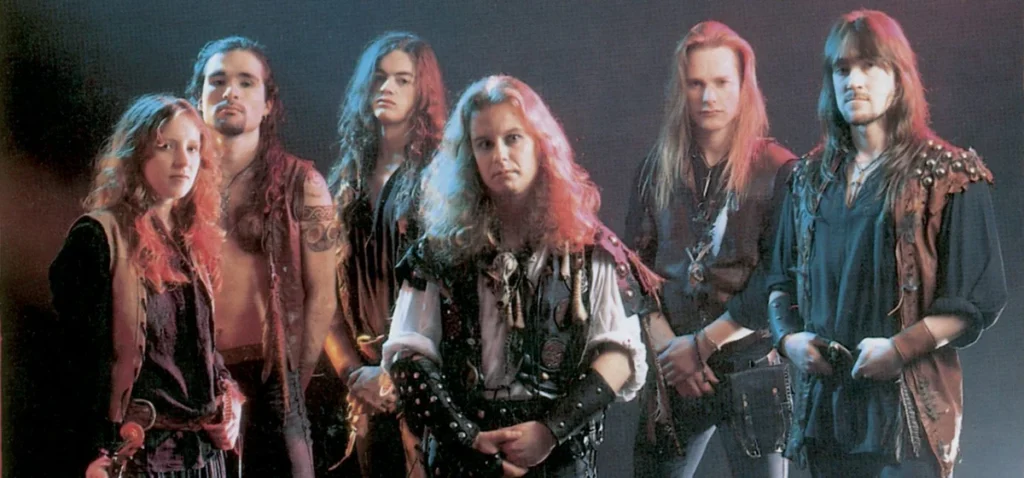
As far as I recall, we were in one of our local hostelries, presumably after a few pints of beer. It seemed like a good idea at the time as they say, says bassist Graeme English. Ramsey, English, and Walkyer were no strangers either. And when they were free of their commitments to their other bands, the time seemed right to finally work on something together. Steve Ramsey explains: We basically lost our record deal with SPV and were so disillusioned we all decided to call it a day. We met Martin through Roy Roland, the producer of the two Pariah albums. Sabbat liked our stuff and decided to use Roy for their new album. They were recording in London and needed somewhere to stay. Pariah were based in London at the time so we obliged. Later after the release I tour managed their British tour too and Graeme as their driver. English also recalls: As Steve and I ended up as part of the Sabbat road crew on their first UK tour we already had a pretty good friendship and when we found out he’d left the band Steve suggested that we have a go writing some stuff which turned into the first Skyclad album.
We had become good friends and Martin had a girlfriend who lived in Newcastle. We were all back there by then and would get together for a beer now and then. When Martin left Sabbat I suggested we put some tracks together, either for a solo album or whatever as he was looking for a new project. The project became a full blown band, Skyclad, Ramsey recalls.
Creating ‘The Wayward Sons of Mother Earth’
Their debut album titled The Wayward Sons of Mother Earth was recorded in Jacobs Studios in Surrey England. The effort was produced by the band with the help of Kevin Ridley, who the band would keep cooperating with in the future, and who would become their frontman later in their career, up until 2025. However, the band wanted to expand upon their thrash metal foundations and was not afraid to dabble in instruments highly unusual for the metal scene of those days. The result was a pretty straightforward thrash record with an occasional journey into progressive waters and heavily spiced with a fiddle.
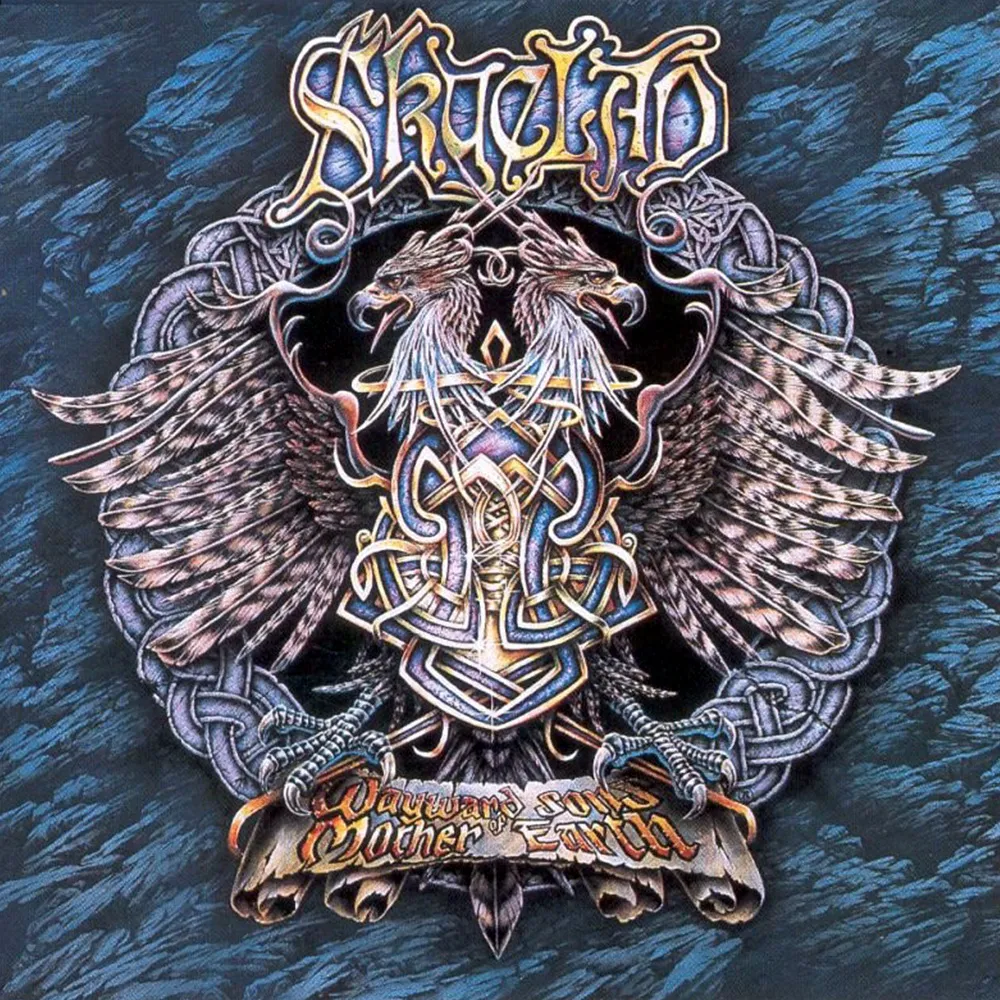
This album was so condensed from recording to mixing we had very little time to think about anything other than working through the songs, the bass player explains. We went in the studio very well-rehearsed and recorded the backing tracks in about seven days then went straight to mixing , so the whole process only took about 16 days total which made the album sound very fresh & lively. No mucking about!
Ramsey adds: We wanted to use all of the tools at our disposal and make the album sound different to an out and out thrash album. The lyrics suited the idea of introducing folk elements to the music. Kind of like the protest songs popular in the sixties. I found it quite easy to make the music from the lyrics that Martin had written beforehand. It was great to have an open canvass musically and let the lyrics guide me.
Satire, Soil and Spiritual Rebellion
Steve and Martin were writing songs together and wanted to take some of the music a little bit more folk based, introducing some violin to it which on the first albums is pretty minimal but we elaborated on this with future albums. Keyboards came about mainly to pad out some of the sounds of the guitars and make it sound a little darker and a little heavier. Some of the unorthodox ideas we have come about through our love of experimentation with various instruments to make the dynamics of the music change on various albums, we’ve never been a band that would stick to one particular formula or set of rules though, the folk base has always been in our roots, English adds. I think our first album is a great piece of work and with the introduction of the fiddle into this album we set the ball rolling for what was to come. Fork influence and fiddle had been used in rock a few times before but I think it was the introduction into trash music that made this so revolutionary, he concludes.
Their music was not the only thing influenced by the pagan themes Walkyer was infatuated with. The band also matched their image to their lyrics, becoming a visual sensation the press was simply not ready for. A lot of the image concepts that we came up with at that time were carried over from what Martin wanted to do with Sabbat but the band were not overly keen on pursuing this new looks and ideas, which is one of the reasons why they parted company, English explains.
The pagan ideals influenced us a lot at the start and we actually had authentic paganesque stage gear made from real animal hides at the beginning. Their unique appearance prompted some odd reactions from the press, who frequently called out the band for their Robin Hood like image. The Robin Hood thing was a joke created by the English press about our eccentricities. When you do something out of the ordinary there’s always someone quick to tag you into something else, Ramsey adds. We didn’t really think about it at the time, just made the music we wanted to make. I guess it wasn’t everyone’s cup of tea. The press in England called us eccentric and weird.
The band would prove them right after all only a year after releasing their debut. During the promotion of their Tracks from the Wilderness EP published back in 1992, that featured the smash hit in the form of Thin Lizzy cover of Emerald, the band would embrace their pagan influences fully, and performed, well… skyclad. Ramsey explains: The manager from Noise UK asked us to mime to Emerald in front of a bunch of suits in a conference room to promote the release. We weren’t keen on the idea but agreed, and after a few drinks the night before decided to make it a bit more exciting for them by performing skyclad. They were shocked to say the least. Mike Exley, the guy in charge, made Martin put his shorts back on but by that time the rest of us had already gone on stage!
We had the bright idea of going on stage stark naked and hopefully there were no photographs taken, none have ever shown up on the Internet so I guess not, English remembers.
The Violin That Changed Everything
The fans of both Sabbat and Satan were treated with a brand new type of sound, and while some of them welcomed the change of pace with open arms, others were not so open-minded. As Graeme explains: I’m not sure that either fan group was ready for the first Skyclad album and I guess we picked up fans from both our previous bands and a whole lot more that were into the madness that we were doing. Thrash metal scene was and still is the one of the most conservative sub-genres of metal and one resisting change the hardest, so adding something new into the mix was a huge challenge for the band. English agrees: Thrash metal fans can be a little bit blinkered to change in their particular genre, but we found that the fans we got with Skyclad were particularly accepting of what we did considering that it’s really only the first two albums that have a strong thrash influence. Later we introduced a lot more folk music and quite often a more commercial edge to our music. I think because we were trying something a little different people were more open to the ideas we had and I suppose with hindsight we influenced a lot of bands and a whole new genre of music.
The band embarked on a tour with a fellow English thrash metal act Xentrix. Rounding their line-up with Fritha Jenkins on the fiddle and a session guitarist, Danny Porter, the band had the chance to present their unique take on metal to wider audiences. The tour was great for us. We were a band that would develop a lot of support through our live performances. Offering something new and different proved to be a good thing. We also wanted to break the stereotype of the musical genre by having a girl in the band too. This attracted a lot more female fans that would normally be in to this male oriented market, recalls Ramsey.
English adds: We toured with Xentrix early on in our career through the UK and the response was really good we also did a very extensive tour throughout Germany with Manowar which again picked us up a lot of fans. I think the surprise was twofold both having fiddle in a metal band and also having female fiddle player as we’d brought in Fritha by that time.
Among some of the greatest progressive metal influenced thrash tracks such as Trance Dance (A Dreamtime Walkabout), The Cradle Will Fall or the closing track Terminus, was a song that noticeably stood out from the bunch. The Widdershins Jig, as it is called, is by no coincidence the track often attributed with being the first folk metal track, setting the template for folk metal as we know the genre today. It was the experimental track on the album. Again the lyrics influenced the music and it was a kind of taster to see if anyone would like this direction musically. We had written a thrash album to appeal to fans that we already had inherited from our previous bands but had a lot of ideas we wanted to try out also. Fans liked it so then ‘Spinning Jenny’ and the rest came forward, Ramsey explains.
And All Danced To The Sound of the Fiddle
Graeme weighs in as well: It is true The Widdershins Jig is classed as one of the first, if not the first folk metal track. To a certain extent it’s hard for me to take in the fact that this track was so influential in the music scene and has had a large influence on many other bands. The track itself is of a fairly simple structure, a catchy riff with a great fiddle line but has become ageless as we still play it at every gig we do even to this day. I’ve even heard that there is a Morris dancing group that use this as one of their theme tunes to dance to.
However, the mentioned Morris dancing group were not the only ones influenced by the band’s brave mix of styles. A lot of bands followed their example whether directly or indirectly. These were bands from various parts of the globe, incorporating their own national folk elements into their music. These bands included Moonspell in Portugal, Moonsorrow and Amorphis in Finland and perhaps most obviously Subway to Sally in Germany and Cruachan in Ireland.
It’s always a huge compliment to know that there are other band that have been influenced by your music and to some extent have formed their own bands by listening to what we did. We knew of some of the bands around at that, but it seemed to be a slow burn to the point where there seemed to be a band in every country sounding just a bit like us. I really like the fact that a lot of these bands also introduced some of their own countries’ folk influences into what they were doing. Obviously we did end up doing a recording session with Subway to Sally, a great bunch of musicians, says Graeme English.
We weren’t really engrossed in what was going on with the scene because we were so busy recording and touring constantly back then. We would be given various tapes etc. from fans while touring and kind of learned like that. We were very proud to think that other musicians liked our music enough to follow the style, Steve Ramsey adds. It was great because none of the bands sounded alike as they would take their own countries folk influence and use that in their music. We did some recording and touring with Subway to Sally in the mid-nineties and became good friends. We’ve also been trying for some time to get together with Cruachan for some shows. It will happen eventually!
Legacy and Recognition in Folk Metal
The folk metal scene would boom in the new millennium, and the Scandinavian countries are at the forefront of this new wave of folk metal. The scene has remained popular ever since as it follows a basic premise: take any metal sub-genre and add folk elements. A lot of fans however are not aware that all of this might not have been possible without one English act acting weird and eccentric.
As I’ve said it seems like every country in the world had a band that was playing folk music but with the inference of the country, Scandinavia did seem to lead the way in that field. I think folk music is in every culture, but every folk music of such countries has a basic different style, and as you say this can be added to any sub-genre to create a new sound. English agrees. I think the folk metal scene is still very vibrant and a lot of shows that we play now with Skyclad there is always a new band that turns up with a new angle on what we started. The genre is so huge now that it’s hard to say whether they are still influenced by what we did in the early days or that they are now influenced by the bands that came after us. In some ways because we’ve had such a long life span some of the bands coming through now would not have been born when we started!
The roots and heritage of all of the styles of folk music, which is the people’s music, is being recognized and loved and if we helped create that then they are following the tradition as we did, Ramsey concludes.
So every time you and your friends dance like crazy and wield your pints (or Viking horns) to a folk metal tune whether it’s to Korpiklaani, Alestorm or anyone else, remember that if it weren’t for this crazy bunch of Englishmen, folk metal would probably arrive a decade late. Of course, none of them were even aware of the impact The Wayward Sons of Mother Earth would have back in the day. We were just trying to find some roots to add to the metal that we all love, says Ramsey.
English concludes: We just did the best album that we could and added a few interesting ideas to it such as a fiddle and keyboard. We couldn’t have known at the time that this was going to be so influential on the music scene… But it was! It’s very nice to think that now though, Ramsey agrees.

